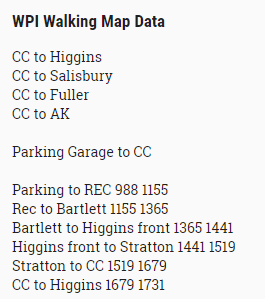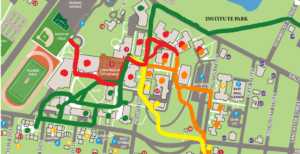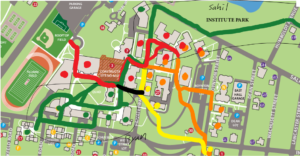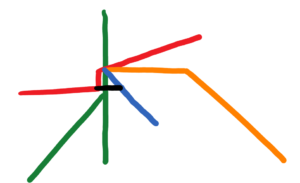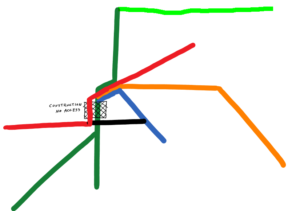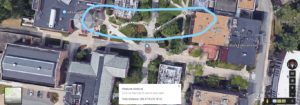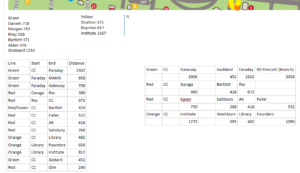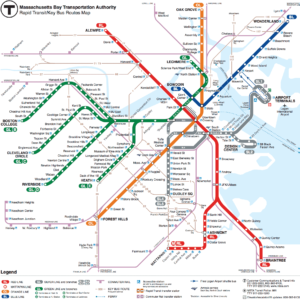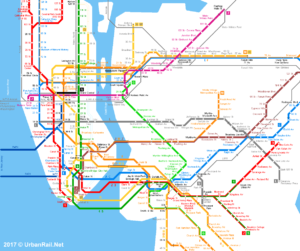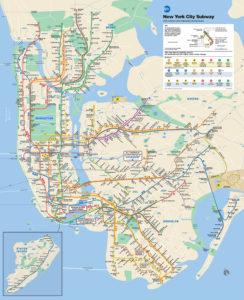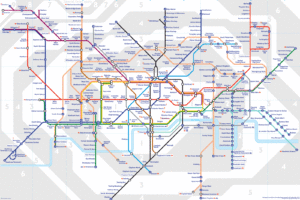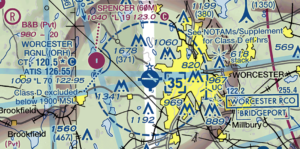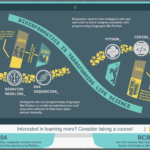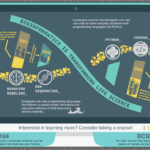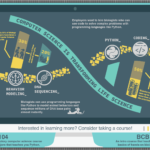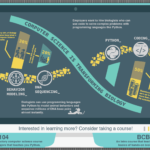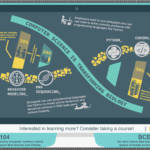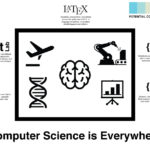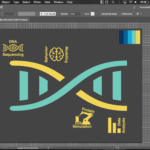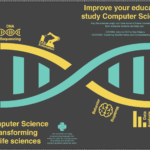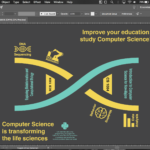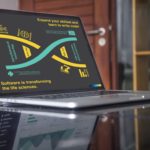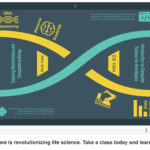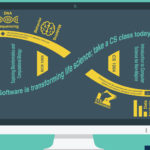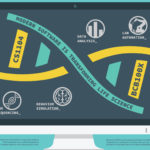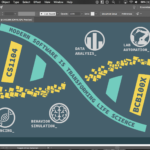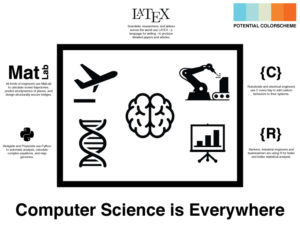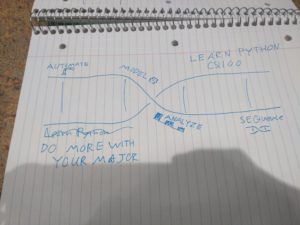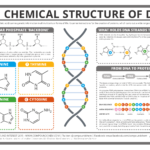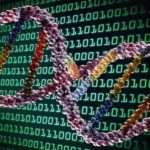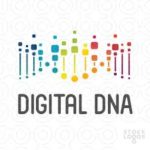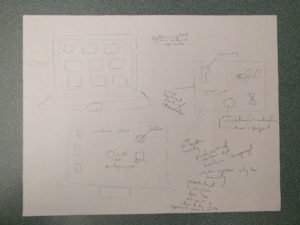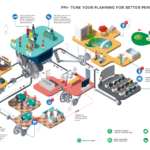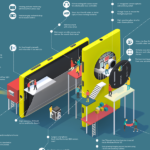The feedback we received from the class discussion was extremely helpful in guiding our direction for the final draft. We realized that there were a lot of subtle biases that we had incorporated into our design. For example, the iconography for the coding languages, specifically Python, wasn’t as universally understood as we thought and added confusion.

Although not intended, the statistics that we used, specifically the “6 percent of life science majors are majoring in bioinformatics,” gave the impression that the information graphic was trying to convince students to major in bioinformatics rather than just take some more computer science or bioinformatics classes to enhance their knowledge. This is an important distinction, because the idea of switching majors or adding an additional major requires much more effort and thus is more challenging to persuade people to do.
In addition, our target audience includes those who have never taken any computer science courses, or who have just lightly dabbled in it. The majority of people majoring in the life sciences majors, in particular biology, are female. Consequently, we decided to further narrow our target audience to female biology students at WPI. This allows us to craft a more targeted message that will hopefully be better at persuading them to take enhance their computer science knowledge.
Some inherent, albeit extremely subtle design choices, made our information graphic seem catered to a male audience more familiar with computer science, such as the iconography, color scheme, and monetary statistics. Generally, women are less drawn to the prospect of a lucrative career than men.
Based on the feedback, we further refined our target audience to be as specific as possible, narrowed down from biology students at WPI to female biology students at WPI, with our purpose being to convince them to take a computer science or bioinformatics course. We also decided to reduce the emphasis on the bioinformatics major to prevent any confusion with the understood purpose previously mentioned.
Based on the feedback we received from class, we decided to continue with the simple iconography and general style, but modify it to better fit our target audience. We used the principle of relatability by showing images of females in science, however as icons to fit our style. We had some difficulties finding a good icon that would match our initial idea of a female with a ponytail wearing lab goggles (so to be instantly recognizable as both a female and a scientist), potentially holding a beaker or Erlenmeyer flask to be even more identifiable. Some of the icons that we found are included with the first being a quick sketch courtesy of Henry 🙂 .
Our next progression of drafts over the weekend are as follows.
Our final draft (for now at least).
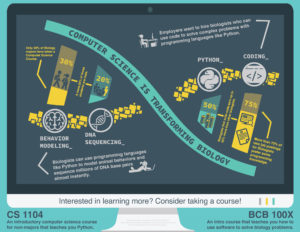
Because of the many changes that we implemented as a result of the feedback session (which I think was extremely useful!), we also changed our artist statement:
The purpose of this information graphc is to persuade biologists at WPI to take computer science (CS) courses by showing them how CS can impact their carreers.
To accomplish this goal, we began by molding our graphic around a DNA strand, immediately telling viewers that our graphic is about biology. By slightly tilting the DNA, we are able to guide the readers eyes as they read from the top left to the bottom right. Symbollically, the DNA has been broken into two strands: solid teal and pixelated yellow. The teal strand represents biology, while the yellow strand represents CS; together, they show how CS and biology are fundamentally intertwined within our graphic. We used the vertical bars between strands to hold statistical information, drawing from a variety of statistics (tragically fabricated due to time and resource constraints) in order to logically persuade our readers into learning more about programming.
Contrasting the DNA, we framed the entire infographic within a monitor (alluding to CS), placing information about beginner CS courses in the empty space surrounding the monitor. We were able to further expand on the DNA with carefully chosen iconography that is representative of the various problems that biologists face, accompanying these icons with subdued text blocks that provide detailed explanations of the icons and their relevance. Throughout the graphic, we attempted to place a larger focus on female viewers, since they comprise a majority of WPI biology majors.

